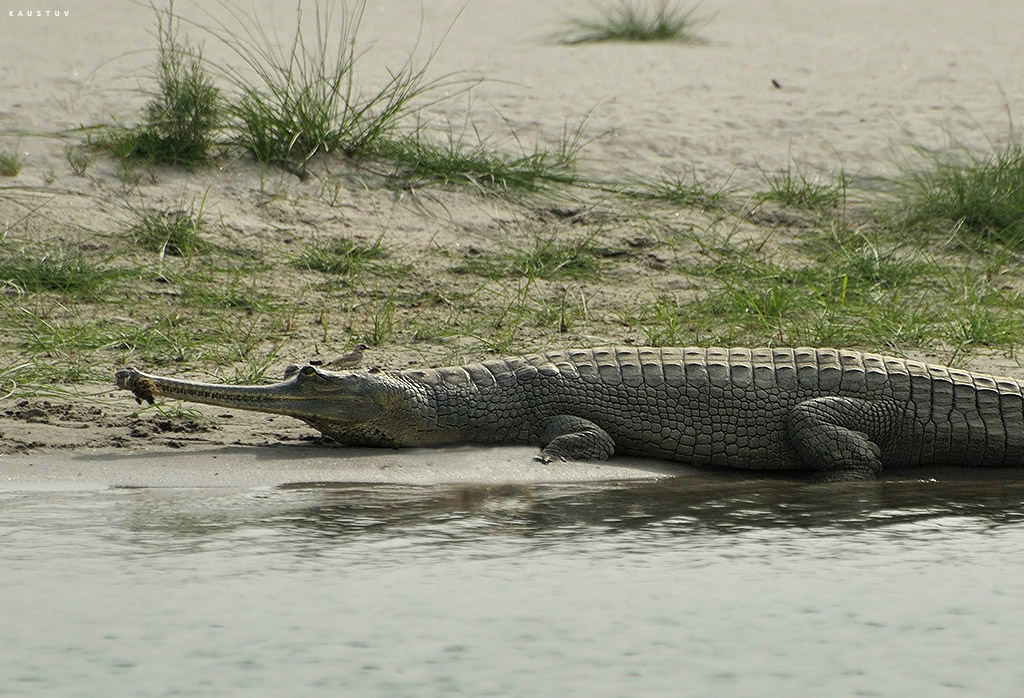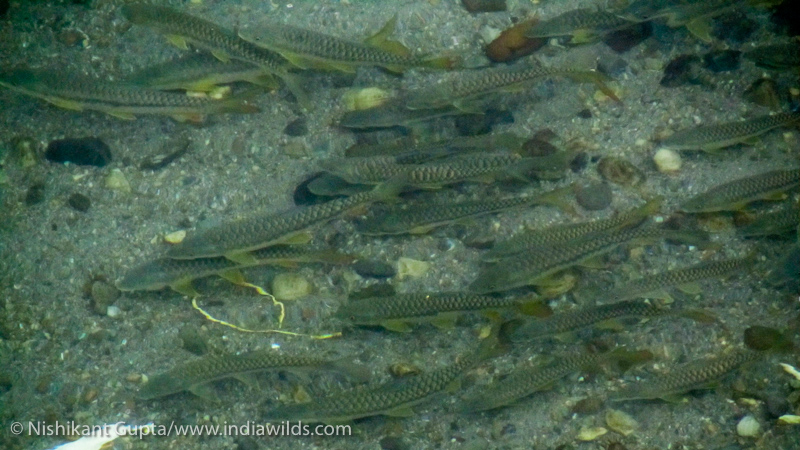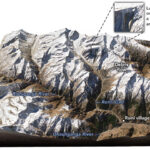Can Mass media help in Conserving Mahseer & Riverine Ecosystem?
By Nishikant Gupta
India is home to a rich assortment of flora and fauna, and many species have suitably established an important position in the psyche of the Indian population through cultural, traditional and religious associations. Additionally, large terrestrial species such as the Bengal tiger (Panthera tigris tigris), the Indian elephant (Elephas maximus indicus) and the Indian one-horned rhinoceros (Rhinoceros unicornis) have long captivated people here through their majestic looks, imposing size and power. These charismatic species have managed to strike a positive chord among not just the Indian public but foreigners too. The numerous international and domestic tourists visiting the various protected areas, i.e. national parks, wildlife sanctuaries, conservation reserves and community reserves in India to observe these species in the wild has increased many folds over the last decade.
A majority of these terrestrial species can be observed within and bordering their designated protected areas (PAs), but seldom far away from such legislatively established zones, except the Indian Elephant whose major part of the territory falls outside the protected areas. In spite of such charismatic wildlife limited to hardly 4% of our landmass in the protected areas, a large portion of Indian population is aware of these species despite a majority of them not having seen them ever in flesh and blood. In our busy lives, the residents of our urban and rural areas are too busy in their daily struggle to eke out a living rather than think or dream of a holiday in the wilds to witness these charismatic species in question. These wildlife holidays apart from being expensive, often require long and tiring journeys to key PAs in India. A few flips of our television channels (disc antennas in remote villages is a common site in India), a few pages of online search engines, and logging into one�s social media pages can often help in watching a film or photo of these charismatic species and help serve to continue the existing perceptions about wildlife that people have. The role played by mass media in keeping these charismatic species in the minds of the general public is immense, even though most of the coverage is sensationalistic and is aimed to arouse fear instead of love for the species.
One then wonders that if mass media has been so successful in keeping the news about wildlife in front of people, albeit mostly for the wrong reasons, then could there be a potential for raising awareness for our often neglected river ecosystems and the species supported by them? After all, our riverine ecosystem is as important as our forests. Millions of people depend on the perennial Indian rivers and their species, e.g. fish for their livelihood, and multiple threatened species are supported by these rivers, e.g. gharial (Gavialis gangeticus), mugger crocodile (Crocodylus palustris), and South Asian river dolphin (Platanista gangetica). In addition, other riverine species such as the smooth-coated otter (Lutrogale perspicillata), the common otter (Lutra lutra), the oriental small-clawed otter (Aonyx cinerea), and the mahseer (Tor spp.) fish species could have the potential to generate substantial public interest. People, young and old alike, often flock to the temple ponds to feed fishes and watch the fishes big and small come close to the ghats. So a freshwater species can catch the imagination of people if promoted well. And to top it all, people readily buy into the idea of �picnic� which in earlier days invariably meant a feast in a scenic locale near a stream or river if not in a dense forest.
One can exploit the fascination for fishes by promoting the mahseer (Tor) fish species, some of which can sometimes exceed 3 meter in length. Mahseer fishes are found in some of the major Indian River systems. For example, the golden mahseer occurs in rivers from Darjeeling to Kashmir; the red-finned mahseer in rivers of Uttarakhand; and the black mahseer in the rivers of Madhya Pradesh, Maharashtra, Karnataka, Tamil Nadu, Kerala and North East. The golden mahseer has also been adopted as a State Fish by Uttarakhand and a few other Indian States. The Indian golden mahseer (Tor putitora) and the chocolate mahseer (Neolissochilus hexagonolepis) are declared respectively as the flagship species (State Fish) of the states Arunachal Pradesh and Nagaland in North-East India (Laskar et al)**
The International Union for Conservation of Nature (IUCN) has categorized the mahseer as threatened species with a decreasing population trend. Of the range of environmental factors resulting in the declining population size of this fish, urbanization, illegal encroachment, over-fishing, indiscriminate poaching (sometimes by the illegal use of poisons and dynamite), and destruction of habitats come up on top. The construction of dams and barrages result in fragmentation of the habitat for the Mahseer fish. This results in the fish losing valuable feeding and spawning ground. Unfortunately, due to lack of awareness about this fish and the lower priority placed on it vis-�-vis other charismatic species like the tiger, this fish never finds a mention in the environmental impact assessment when its habitat is altered due to construction of dams. It is imperative that we need to raise awareness that the fish is not just for our table but it also has an ecological role to play.
There are multiple benefits of promoting and protecting the mahseer species. They are regarded as an apex species in some river systems of India, helping to maintain the overall integrity of the ecosystem. Some scientists have referred to the mahseer as a keystone species, while others suggest promoting the golden mahseer as a flagship fish species for the conservation of himalayan rivers.�Promoting Mahseer fish in the mass media can result in tourists visiting hotspots in the rivers for sighting mahseer. This tourism revenue can help the locals a lot and may hopefully lessen the migration of people from rural areas to urban areas.
Some may argue that spotting a riverine species like Mahseer may prove difficult, as simply walking on treacherous banks of a river doesn�t guarantee sighting. However, through careful media strategy it can be packaged as thrill seeking treks. It should be noted that a casual safari within a tiger reserve too does not guarantee a successful sighting, and it often ends up more about the experience for a majority of the tourists, than simply seeing a tiger and one sights many other species! Similarly in this case apart from sighting Mahseer one can also sight other riverine species like otters, gharials etc.
In the case of the mahseers, appropriate photographs, films and documentaries could generate long lasting and positive effects among people, and can help to develop a desire among individuals to witness the species in the wild. Of course there are fears that such an approach might not be successful as anticipated, because after all, there is tremendous conservational and financial backing from international organizations for larger and more charismatic terrestrial species such as the tiger for example. Nonetheless, with the current threats being faced by the wild populations of the mahseers and Indian rivers, the time is right to take that challenging step towards their protection through the assistance of mass media. The financial hurdle could be overcome by the support of various media establishments, government organizations and NGOs. After all, lesser known, captivating river species such as the mahseers could have the hidden potential to protect itself and associated habitats, but more importantly the Indian rivers � a lifeline for millions through public relations.
**Strategy of mahseer fish (Actinopterygii: Cyprinidae) conservation: A case study in Arunachal Pradesh, India Boni Amin Laskar1, Jawan Singh Rawat2, Mrinal Dasgupta3, Shyama Prasad Biswas4, DebojitSarma5 and D.N. Das6
- The Valley of the Divine Bhagirathi - 28 July,2015
- Can Mass media help in Conserving Mahseer & Riverine Ecosystem? - 26 June,2014
- Local stakeholders� participation: key to protecting the Himalayan Rivers? - 24 March,2014












Nice one Nish, keep spreading the word…
Rivers are such an important part of pretty much every habitat, and, of course, essential for life to continue in any form. By protecting fish and raising awareness, we help to protect rivers. By protecting rivers, we help to ensure forest growth. Healthy forests mean diverse species and micro-climate control, flood mitigation and soil regeneration. We all know it makes sense, but are we prepared to fight for it? Nish is doing his bit, every little helps.
Steve
Thank you very much Steve 🙂
A documentary on something like one year as a Mahseer should help intrigue the public about this fish. Something of this sort can be done on gin-clear rivers like Ram Ganga in UK.
Dear Harsh…it is a great idea…I will definitely look into it…thank you 🙂